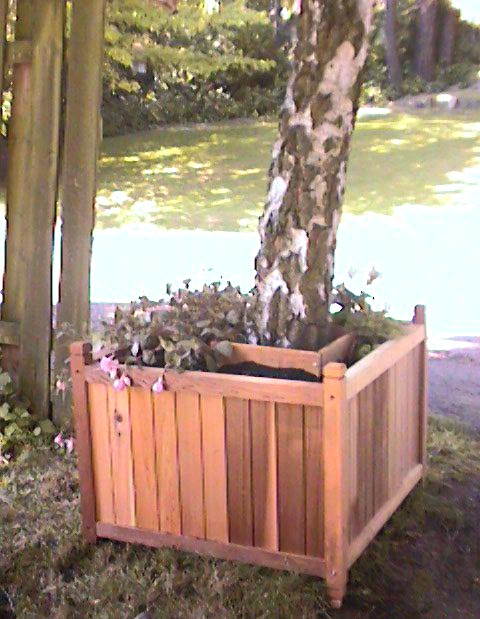
Estate tree box to reduce
exposed root hazards
Cracked and raised pavement or bumps in the lawn caused by
roots can be an annoying and sometimes hazardous elements in the urban
landscape. Surface roots from trees can be caused by a variety of factors, but
the most frequent cause is the selection and planting of shallow-rooted trees.
To avoid problems with surface roots, avoid the following common, fast-growing
species:
Silver Maple (Acer saccharinum)
Tree-of-Heaven (Ailanthus altissima)
Mulberry (Morus sp.)
Sycamore (Plantanus sp. )
Poplar (Populus sp.)
Sumac (Rhus sp.)
Siberian Elm (Ulmus sp.)
Other suggestions to help reduce surface root problems
include:
 |
Plant only shrubs or ground covers in the planting strip
between the sidewalk and the street. Plant large trees in the lawn where there
will be sufficient room for root development. Before planting (especially in
compacted soil), loosen the soil in an area at least five times the diameter
of the root ball and about 12 inches deeper than the root ball. |
 |
Make sure drainage is adequate before planting new trees.
Water-logged soil encourages the development of shallow roots as roots require
oxygen to live and grow. |
 |
Use proper watering techniques. Over watering can cause
water-logged soil, especially in a heavy clay. Frequent, light watering
provides moisture only in the top few inches of soil, encouraging root
development at the surface. So water deeply and only when needed |
 |
Problem of exposed root causing the cracked pavement can be
reduced by building a tree box around
the area to avoid possible dangerous hazards. At the same time beautify the
location. |
![]() Gardeners' Corner
Kids'
Garden
Sustainable Garden
Contact Us
Gardeners' Corner
Kids'
Garden
Sustainable Garden
Contact Us![]()

